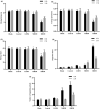The effects of biogenic amines in Chinese Huangjiu on the behavior of mice and hangover headache-related indices
- PMID: 36514756
- PMCID: PMC9731562
- DOI: 10.1002/fsn3.3016
The effects of biogenic amines in Chinese Huangjiu on the behavior of mice and hangover headache-related indices
Abstract
Huangjiu (Chinese rice wine) is a popular and traditional alcoholic beverage in China; however, the consumption of Huangjiu readily results in hangover symptoms. The aim of this study was to identify the main components associated with behavioral inhibition, headache, and the relevant mechanisms by using a mice hangover model. The results of an open-field experiment revealed that the key biogenic amine associated with mice behavior was histamine, which inhibited the behavior activity of mice in a dose-dependent manner. Moreover, histamine treatment decreased the levels of serotonin (5-HT) and 5-hydroxyindole acetic acid. In addition, the levels of dopamine and nitric oxide, which are associated with migraine, increased in the brain tissue of mice. In addition, the expression of receptor genes of 5-HT, including Htr1a, Htr1f, and Htr2c, is essential in regulating various behaviors and mental activities. In conclusion, the present study demonstrated that histamine is a key component in Huangjiu, and it is related to hangover symptoms by affecting the level of 5-HT and its receptors.
Keywords: 5‐HT; Huangjiu; biogenic amines; headache; histamine.
© 2022 The Authors. Food Science & Nutrition published by Wiley Periodicals LLC.
Conflict of interest statement
The authors have declared that there is no conflict of interest.
Figures





References
-
- Benetti, F. , Furini, C. R. , de Carvalho Myskiw, J. , Provensi, G. , Passani, M. B. , Baldi, E. , Bucherelli, C. , Munari, L. , Izquierdo, I. , & Blandina, P. (2015). Histamine in the basolateral amygdala promotes inhibitory avoidance learning independently of hippocampus. Proceedings of the National Academy of Sciences of the United States of America, 112(19), 2536–2542. 10.1073/pnas.1506109112 - DOI - PMC - PubMed
LinkOut - more resources
Full Text Sources

